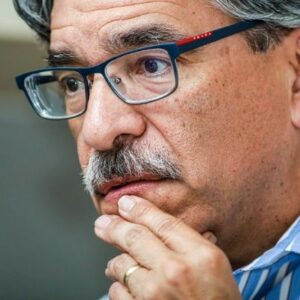“If you know what you want to say, you’ll figure out how to say it.”
That’s what Steve Padilla, editor of Column One at the Los Angeles Times, told a virtual gathering of the San Diego Press Club on April 20, 2021. I watched a recording of his talk, from my home in Vermont, and you can, too, on YouTube.
For my take-aways, I need to go back to that opening note of advice, which I tried to apply to this post. The trick, of course, is figuring out what to say about a talk that covered a wide range of writing tips and advice for experienced writers, and may give a hint of what it feels like to work with on narrative-style stories that are grounded in the news.
I realized it wasn’t words, but a tune that captured Padilla’s wisdom for me.
You may have heard about the “9” story structure, often attributed to New Yorker writer John McPhee. In this structure, the writer starts with something to grab the reader’s attention, then fills in the backstory and details, returning to the opening scene and concluding. Sketch it out, at it looks like the number 9, or to some, a lower-case letter e or q.
Of course, McPhee is a long-form guy, backed by the time and support of the New Yorker. His books and magazine pieces are lengthy and jam-packed with meticulous reporting. Studying the structure of those can seem overwhelming.
But the song “The Streets of Laredo” runs only a few minutes. That’s what Padilla used to teach the “9” format.
Sing along to hear the structure
He sings a verse from the cowboy ballad (which was adapted from an English folksong) about 39 minutes in to the San Diego talk. It’s a bit of an ear worm. Several days after watching the video, I was still humming the tune. Maybe that was the point: It was one of the primary ways Padilla ways to think about writing concepts that you may have heard before, but never really stuck.
Related reading
For example, Padilla touched on the difference between a destination narrative and a journey narrative.
In a destination narrative, the reader doesn’t know where the story will end up. I think of a classic mystery plot: Gripping in a novel or TV show, but hard to pull off in journalistic pieces, which are not designed to keep secrets. Headlines and photos often give the destination away.
So consider, instead, a journey narrative. The reader already knows the ending — perhaps a known news event. In this approach, the writer’s job is to take the reader along on the journey to that known ending. The discovery is not so much what happened, but how or why.
For me, having this terminology is useful. You and your editor may agree that your article is a narrative, but if you think it’s a destination narrative (and in my experience, the editor never thinks it’s a destination narrative), it’s helpful to have a way to explain why it requires special care in editing and layout.
Another of Padilla's helpful narrative tips: Start a scene in the middle, especially when trying to stay within a word count. He cited the television show “Law & Order,” which often jumps from the identification of a suspect to the middle of an interrogation.
Still need to squeeze words? Eliminate the set-up sentence before a quote if all it does is repeat what the quote says.
Don't lose the meaning in the details
All good advice and reminders. But for me, the most helpful comments centered around this statement: “Let the meaning control your words, and don’t let your words control your meaning.”
It’s easy to get tangled up in the myriad technical lessons we know about writing. Things like “put the best stuff at the end of the sentence” and “use simple verbs.” But if I remember to put meaning first, I’m more likely to write what I need to write, and less likely to get bogged down in overthinking writing techniques or work too hard making my writing fancy. Example: Padilla says not to think about active verbs in the first draft, but to hunt down your passive verbs later and rewrite those sentences.
“The most important thing in writing is the meaning, the message, the idea, the point,” Padilla said.
Finally, Padilla advises writers to have a rough idea of their ending when they begin to write. (That would have been a good idea for this piece.) He also urges writers to break the habit of ending with a quote by ending articles, especially features, in your own voice instead.
You can find more of his writing advice in the video or by following him on Twitter @StevePadilla2
***
Madeline Bodin is a freelance environmental and science journalist based in Vermont.




